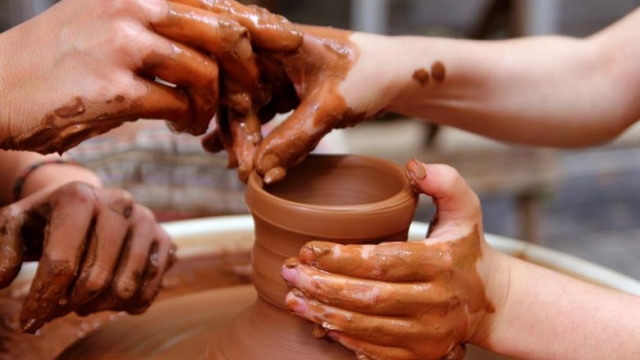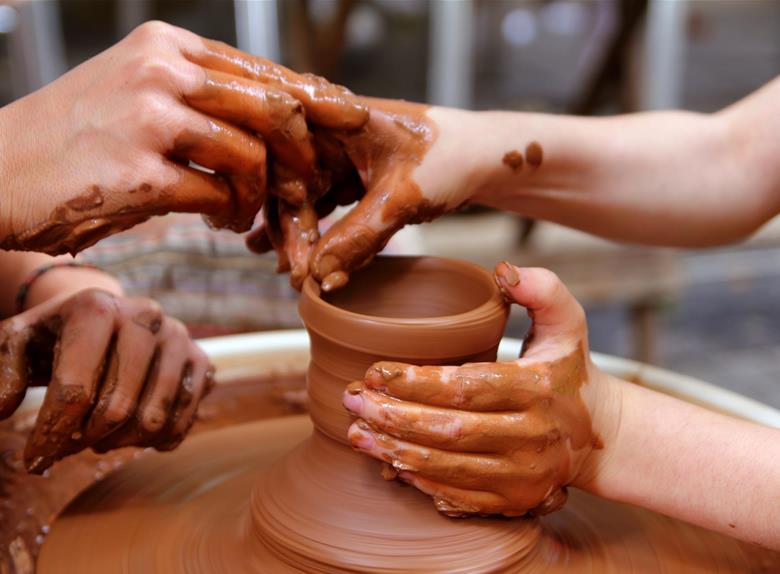
From Clay to Creation: Unveiling the Artistry of Pottery

Pottery is an ancient craft that has been shaped by human hands for thousands of years, each piece telling its own unique story. From the practical vessels of early civilizations to the exquisite art pieces showcased in galleries today, the artistry of pottery encompasses both form and function. It is a tactile experience, merging creativity with technique as artisans manipulate clay to create pieces that are not only beautiful but also deeply personal.
At Amitābha Studio, this tradition of pottery is given a contemporary twist. Specializing in one-of-a-kind lamps crafted from antique and vintage Delft and other Dutch and Belgian pottery, the studio breathes new life into historical materials. Each lamp is a testament to the skillful hands that shaped it, inviting us to appreciate not just the beauty of the piece, but the rich history and artistry behind its creation.
The History of Delft Pottery
Delft pottery, known for its distinctive blue and white designs, has its roots in the 16th century when Dutch artisans began to produce tin-glazed earthenware inspired by the Chinese porcelain that was highly coveted in Europe. The city of Delft quickly emerged as a center of this craft, benefiting from its strategic location and the influx of skilled craftsmen who had fled from other regions. By the late 17th century, Delft became synonymous with high-quality pottery, establishing a reputation that would endure for centuries.
Coastal Chic
The techniques used in Delft pottery production were refined over the years, leading to the creation of a variety of pieces, including decorative plates, vases, and tiles. The hallmark blue and white designs were often influenced by Dutch culture, featuring landscapes, floral patterns, and historical scenes. This unique style not only showcased the artisans’ skills but also played a significant role in the trade networks, making Delft pottery a desirable item across Europe.
As the demand for Delft pottery grew, numerous factories were established in the city and its surroundings, with each striving to differentiate itself by introducing innovative designs and techniques. The 18th century marked a golden age for Delftware, when the craftsmanship reached new heights, and the pieces became collectibles. Today, the legacy of Delft pottery continues, inspiring artists and potters globally, including the unique creations found at Amitābha Studio, where antique and vintage pieces are transformed into one-of-a-kind lamps.
The Artistic Process at Amitābha Studio
At Amitābha Studio, the artistic process begins with a deep respect for the history and craftsmanship of vintage Delft and other Dutch and Belgian pottery. Each piece is carefully selected, reflecting a unique story and cultural heritage. The artisans at Amitābha take time to understand the characteristics of the materials they work with, ensuring that every lamp they create is infused with the spirit of its origins.
Once the pottery is chosen, the transformation into a lamp begins. The artisans skillfully combine traditional techniques with innovative designs to enhance the beauty of the original pieces. This process often involves meticulous cleaning, repairing, and preparing the pottery, allowing the original artistry to shine through while integrating modern elements. Every detail is considered, from the type of light fixtures used to the arrangement of the pottery, creating a harmonious balance between past and present.
Finally, the finishing touches are applied. This stage is crucial as it elevates each lamp from a simple design to a stunning work of art. Whether it’s applying a special glaze or integrating unique bases, the goal is to create a functional piece that serves as a centerpiece in any space. The result is a one-of-a-kind lamp that not only illuminates but also inspires, inviting conversations around the artistry inherent in each piece of pottery.
Unique Designs and Techniques
Amitābha Studio stands out in the pottery landscape by offering lamps that merge artistic heritage with modern functionality. Each lamp is a testament to the skill of artisans who meticulously select antique and vintage Delft and other Dutch and Belgian pottery pieces, breathing new life into them. By combining classic and contemporary elements, these designs evoke a sense of nostalgia while serving as unique focal points in any space.
The techniques employed in the creation of these lamps are as varied as the pottery they are derived from. Artisans at Amitābha Studio often incorporate traditional handcrafting methods alongside innovative approaches to lamp construction. This blend ensures that every piece not only illuminates a room but also tells a story, reflecting the past through its intricate designs and materials.
The process of transforming pottery into lighting fixtures requires a keen eye for detail and an appreciation for the craftsmanship of each piece. Each lamp retains its original character, enhanced by modern enhancements that provide functionality without compromising aesthetic charm. This careful attention to detail and respect for the pottery’s provenance make Amitābha Studio’s creations truly one-of-a-kind, setting them apart in the world of design and artisanal pottery.
Sustainability and Vintage Materials
Sustainability plays a crucial role in the artistry of pottery, particularly for studios like Amitābha Studio that emphasize the use of vintage materials. By sourcing antique and vintage Delft and other Dutch and Belgian pottery, artisans are able to minimize waste while celebrating the rich history behind each piece. This commitment to sustainability not only helps reduce the demand for new resources but also gives a second life to materials that might otherwise be forgotten.
Using vintage pottery in the creation of unique lamps is a testament to the beauty of craftsmanship that has stood the test of time. Each item carries its own story, adding depth and character to the final product. The process of transforming these treasured pieces into functional art reflects a deep respect for historical techniques and styles, showing that sustainability and creativity can go hand in hand. The choice to repurpose these materials reinforces the idea that art can be both beautiful and responsible.
Moreover, the trend of upcycling vintage pottery aligns with a growing appreciation for sustainable practices in modern design. Consumers are increasingly drawn to items with a unique narrative, turning away from mass-produced goods. By focusing on the artistry of pottery that incorporates vintage materials, Amitābha Studio contributes to a culture that values sustainability, creativity, and individuality, making each lamp not just a light source, but a cherished work of art.
The Impact of Pottery on Interior Design
Pottery has long been a cherished element in interior design, providing unique textures, colors, and forms that enhance the aesthetic of any space. The tactile quality of handmade pottery introduces warmth and character, making rooms feel more inviting. From planters to decorative bowls, each piece tells a story and adds a personal touch to the decor, often reflecting the cultural heritage of its origins.
Incorporating pottery into interior design allows for versatility in style and function. It can seamlessly blend with various design themes, from rustic to contemporary. Unique pieces like those crafted by Amitābha Studio from antique Delft and other vintage pottery serve as focal points, drawing attention and sparking conversation. These one-of-a-kind lamps not only illuminate a space but also act as functional art, enriching the overall ambiance of the room.
Moreover, pottery’s natural elements can evoke a sense of calm and balance within an environment. The organic forms and earthy colors of the materials create visual interest while promoting a harmonious atmosphere. As people continue to seek ways to personalize their living spaces, pottery remains a timeless choice, merging artistic expression with everyday practicality in stunning fashion.



